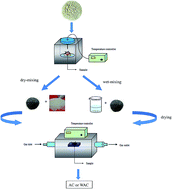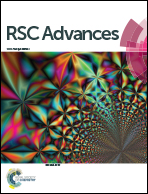Comparative study of dry-mixing and wet-mixing activated carbons prepared from waste printed circuit boards by NaOH activation
Abstract
Two activated carbons have been produced from the non-metallic fraction (NMF) of waste printed circuit boards (WPCB) by sodium hydroxide activation by two methods, dry-mixing and wet-mixing. Dry-mixing is the waterless way by direct powder maceration; activated carbon prepared through this way is called AC. Wet-mixing is by impregnation within an aqueous solution; activated carbon prepared through this way is called WAC. Activated carbons differed in physical structure and chemical properties as derived from N2 adsorption/desorption isotherms and Fourier-transform infrared spectroscopy (FTIR). Batch sorption studies were performed to compare the ciprofloxacin (CIP) adsorption properties of the two carbons. Experiments proved that the method of mixing has great influence on the preparation of activated carbons. AC showed better characteristics and adsorption properties than WAC. AC had 2304 m2 g−1 surface area, while WAC had 1141 m2 g−1 surface area. Fourier transform infrared spectra indicated the two activated carbons had similar functional groups. For both adsorbents, the adsorption kinetics followed the pseudo-second-order model. The adsorption equilibrium data were very well represented by Langmuir equations.


 Please wait while we load your content...
Please wait while we load your content...